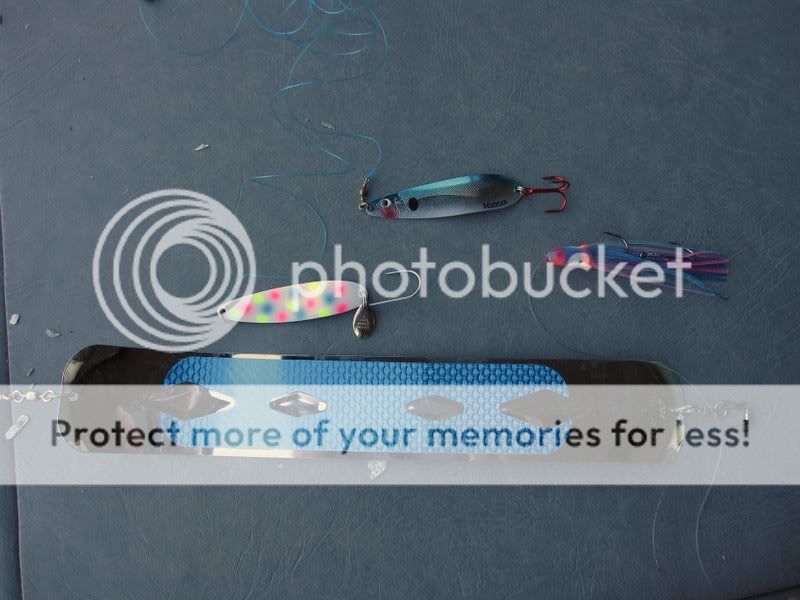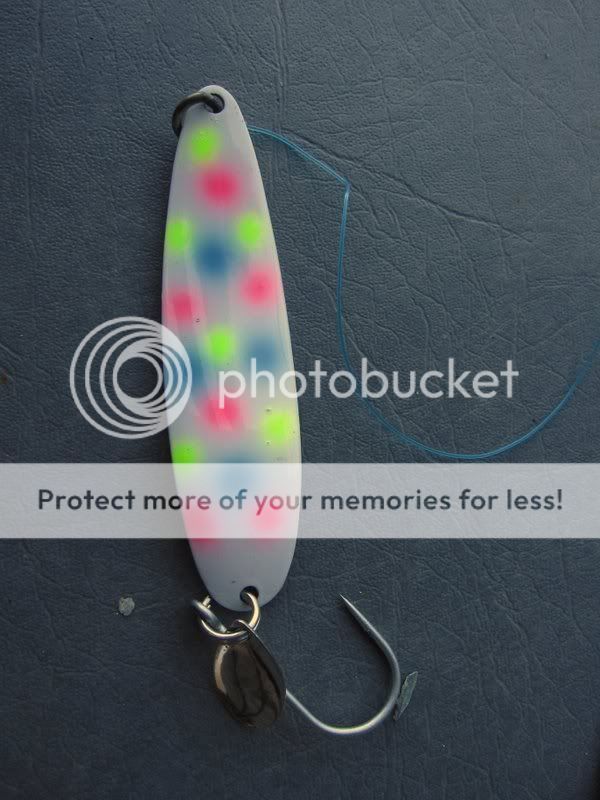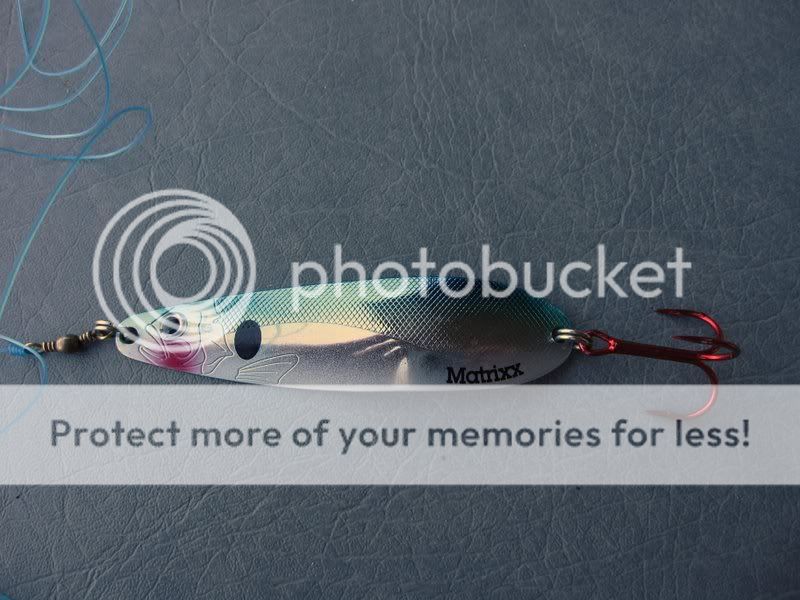New member here, have been lurking for a while.
I have periodic access to a boat for salmon fishing in Vancouver Harbour and Howe Sound. There is no downrigger aboard, and I am usually alone. I was around the Bell Buoy on Monday and was very frustrated to watch many boats around me landing fish while I went without so much as a bite.
Here is the gear that I was using on Monday, all towed behind a diving plane:




I was running approximately 80' of line out, but the plane only seemed to be diving at no more than a 30 degree angle, so figure that my depth was around 25-40ft (it varied due to current and boat direction).
I don't even know if I connected the flasher with the correct end leading (if there is a difference).
Hope some of the experienced people can share some input.
Thanks!
I have periodic access to a boat for salmon fishing in Vancouver Harbour and Howe Sound. There is no downrigger aboard, and I am usually alone. I was around the Bell Buoy on Monday and was very frustrated to watch many boats around me landing fish while I went without so much as a bite.
Here is the gear that I was using on Monday, all towed behind a diving plane:




I was running approximately 80' of line out, but the plane only seemed to be diving at no more than a 30 degree angle, so figure that my depth was around 25-40ft (it varied due to current and boat direction).
I don't even know if I connected the flasher with the correct end leading (if there is a difference).
Hope some of the experienced people can share some input.
Thanks!


